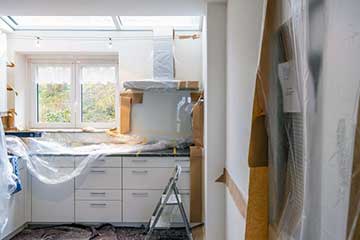New Build vs Existing Home, Pros and Cons Guide
When comes to an new build or an existing house, especially if you are a first-time buyer, you should consider both advantages and disadvantages before you decide which suits you better. Our “New build vs Existing Home” Guide is the perfect starting point when comes to weight up what is important for you and which of these two type of properties are ticking your “must have” list.
Probably, if you are looking to buy your next home or your first house, most likely you saw offers from a brand new property developer. Even that, in average each year more than 150,000 new houses are build, the shortage is still acute and the house prices will keep increase. So, let’s see what are the pros of buying a new build property.
- Incentives from developers – Some property developers in order to pursuit a sale will add incentives to your new build package, such as covering the flooring costs, or a part of your stamp duty.
- Governmental scheme boost – For many first-time buyers, a new build home is the only option as schemes such as Help-to-Buy or Shared Ownership are only available on the purchase of a new property.
- Top spec design and features – Most of new build homes will come with top-spec equipment and designs, such as “smart home” features. Also, a builder may let you choose your fittings and in most cases will present you two or three layout options.
- Lower energy bills – Due to newer building regulations, the new build properties have to comply with stricter energy efficiency rules. Most of new build homes will be rated, as per EPC, on B or A ratings. In comparison, existing homes with a B or A rating count for only 2.2% from overall number of existing buildings.
- Warranty – Most new builds come with a warranty (as most of brand new purchases). Make sure you understand what a new build warranty covers and what are the conditions for the warranty.
- Chain-free – Buying a new build property will mean that you will be the first owner, meaning that will you do not have a chain of buyers above you. For some buyers, this is the main factor to push the balance on opting for a new build instead of an existing house.
United Kingdom’s property market consists of 83% of properties being build pre-1990, counting over 24.8 millions dwellings (out of 28.5 mil) as per Housing Stock Report, 2017. There are plenty of older properties that will turn your head during your home hunt, from beautiful Victorian terraced houses to more modern detached dwellings. Here are some pros for buying an existing home:
- Community and neighborhood – An existing home is more likely to be already in established community, nearby amenities such as established restaurants, pubs, schools, etc.
- Character – With an existing dwelling, you will get a “piece of the neighborhood” character. From sash windows of a Georgian property, a fireplace from a Victorian house to stained glass panel from a 1930s suburban house. Different periods dictated the surrounding character and implicitly the existing house design and features.
- Space and potential – Older homes tend to have larger gardens and more spacious rooms and also, gives you the opportunity to put your own character within especially if you want to modernize it or to create an extension (can potential increase the property value).
- Negotiation opening – With an existing house, what you see is what you get and if you have done your research (have a survey carried out also), you will have the potential of negotiating even more the purchase price, especially if the survey revealed any issues. Older properties are more likely to have issue brought up in your survey, which can be seen as an disadvantage for picking an older dwelling, but if you are a first-time buyer and you want to put your character in, can be actually an advantage to get your dream home at an even lower price.
Need A Free Estimate?
- Fully qualified RICS professional surveyor
- Affordable, fast and thorough surveys
- Clear, precise and easy to understand report
Here are some reasons not to buy a new-build home:
- New home premium – As with any brand new item, once you buy it is no longer “brand new”, which means that even a 6-month-old property may fall in value as buyers look at the new-builds popping across the street. In order to minimize this effect, is recommended to plan staying in that property for a longer term. When you do your inquiries ask the developer on their plans for adjacent plots especially when the development land is split in phases.
- Space – Lately, due to the increasing price of materials and higher expenses, some developers are squeezing more properties onto a site in order to maximize their profits. This means that some new builds are less spacious than older properties, in terms of interior or garden space.
- Leasehold vs Freehold – Most developers, prefer to sell a new build as a leasehold rather than freehold. This translates as potential additional costs in long term, so make sure you understand exactly what are the leasehold costs before you decide if the new property becomes your home.
- Potential restrictions for choosing your desired conveyancer – Often a developer will request you to use only their own recommended conveyancer which sometimes can bring extra pressure into accepting their own conditions. As advice, we recommend getting a reputable professional which is not partnered with the developer to ensure that the contract is in your favor and your deposit is fully protected and less likely to bend under pressure.
- Potential delays – As probably heard or already experienced, a new build can be delayed from various reasons, bad weather, lack of materials, etc. However, sometimes can become more than just an inconvenience, can add extra stress and costs to your moving in process. Also, some mortgage lenders can bring penalties or even withdraw your mortgage package if the delays are too long.
- Snags and quality issues – In 2018, 34% of new-build buyers said that their new home had more problems than they had expected and a quarter of them reported more than 16 problems to their builder. A trend that seems to be getting more and more exposure in media in the latest years can get costly if is not dealt properly and in time. A first step to avoid this type of issue is to hire a chartered surveyor to carry out a snagging survey as soon as the developer will let you on site. This way you will get a professional to create a list of snags that should be rectified by the builder before you move in.
Here are some reasons highlighted by home owners and buyers not to opt for an existing dwelling:
- Chains – This is probably the main reason, for why a buy can fell out and is no surprise that is the same case here. When you depend on somebody else deal can make the buying process more stressful.
- Energy efficiency and maintenance – Unlike a new-build house, you need to expect that an older property will be less energy efficient and the maintenance bill can be higher. However, keep in mind that you can be eligible to grants from local authority or through national schemes for energy efficiency improvements.
- Remodeling and renovation costs – In most cases, you will find an outdated kitchen or bathroom when comes to an existing dwelling. Nevertheless, this disadvantage can be seen as an advantage to get a blank canvas and to put your character in. Just keep in mind that you need to factor it in your budget.
So, there is no right or wrong when comes to deciding between a new-build home or an existing property. Always comes done to your personal preferences, budget and skills. Either way, we recommend to always have all the information about your preferred property before you take a decision.
Written by Danil P.
10th Oct 2021 (Last updated on 4th Mar 2023)
4 minute read





